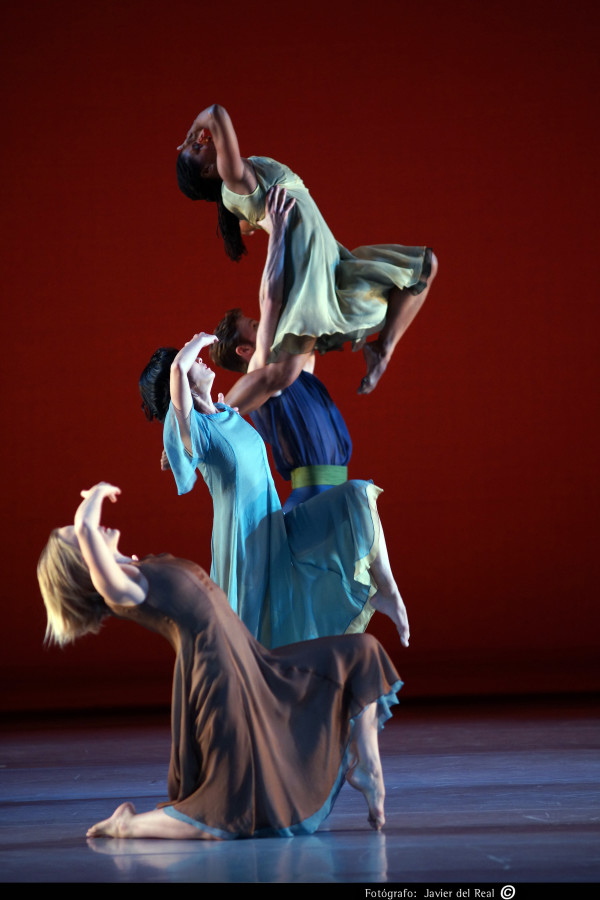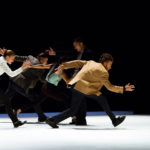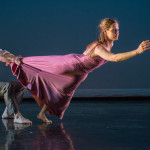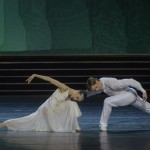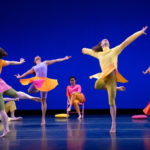Leigh Donlan reported from CalPerformances in Berkeley:
To any world-weary wanderer who is questioning the meaning of life, I’d prescribe Mark Morris’ L’Allegro, il Penseroso ed il Moderato. I’d lead them gently to the lip of the stage where we’d sit and gaze upon the magnificence of this masterpiece. And worldly woe would vanish.
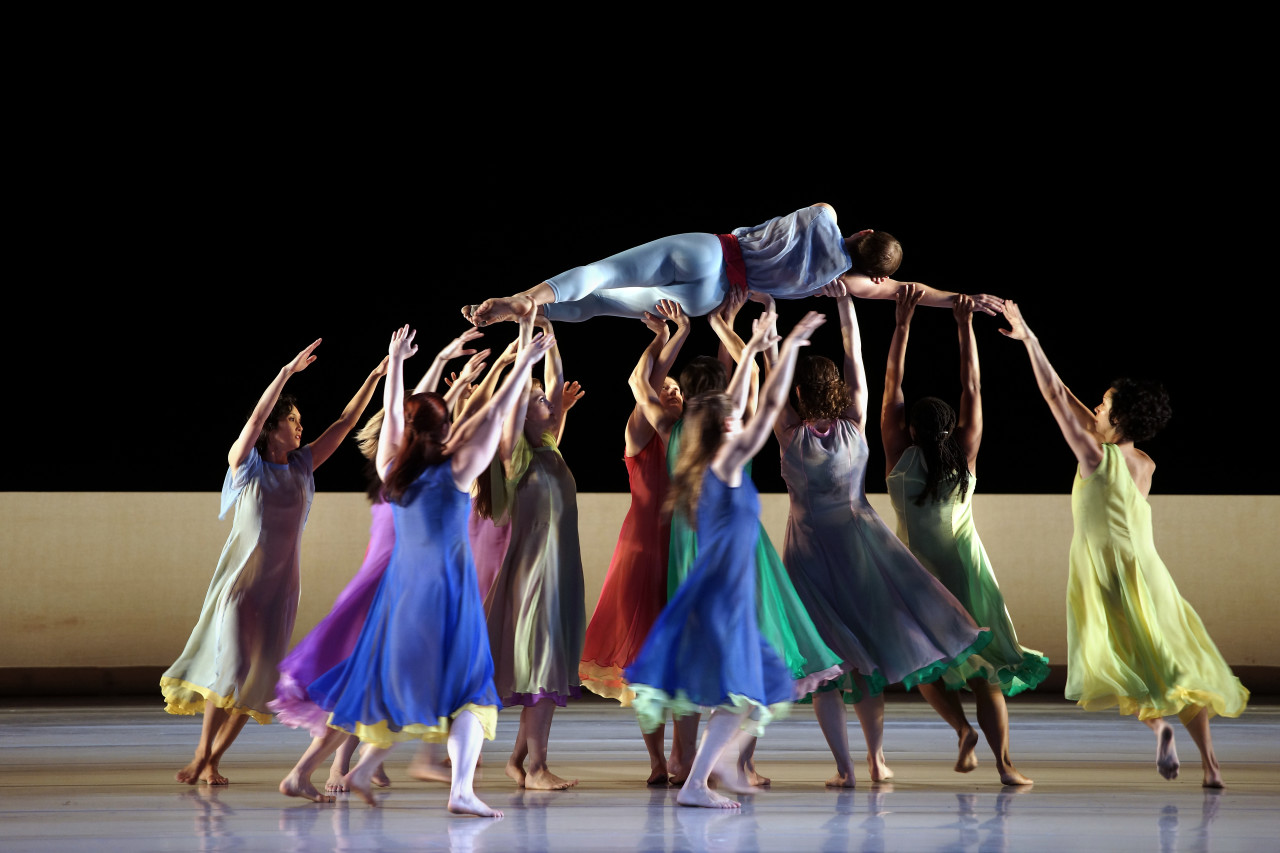
Mark Morris Dance Group in Mark Morris’ L’Allegro, il Penseroso ed il Moderato (Photo: Javier Del Real)
Morris was catapulted to master architect status after L’Allegro’s 1988 debut in Brussels. Because of his renowned musicality, combined with Nature as his flawless muse, this dance now resides in a class of its own. Its truths are timeless: the beauty of life surrounds us at all times, if we choose to see it. In one representative scene, the ensemble – often the embodiment of joy – soar across the stage, imitating a flock of birds in an array of flight patterns. Meanwhile, a lone male broods in the corner, oblivious to the delight around him.
There are actually four masters at work here: poet John Milton who wrote the 1645 pastoral poem comprised of two opposing characters – the joyful man and the contemplative man; composer George Frideric Handel, whose two glorious Baroque movements illustrate the dramatic range found within these two states of being; and librettist Charles Jennens who, at Handel’s request, penned a third character, Il Moderato, who represents an attempt to reconcile the former two.
And then we have Morris’ transcendental visions, which ceaselessly amazed Sunday’s Zellerbach patrons. Every chorus trill, every plucked string was increasingly indulged by gesture, some so subtle and quick to disappear that I now understand why a film was made of this evening-length work (I wanted to press pause throughout.) Each moment teemed with life – an endless variety of sounds, shapes, colors, and movements, stunning and sometimes overwhelming.
The dance presents us with joyful Mirth and pensive Melancholy pleading their equally noble cases through the wondrous voices of world-class librettists Sherezade Panthaki (soprano,) Yulia Van Doren (soprano,) Thomas Cooley (tenor) and Douglas Williams (baritone,) and the exquisite Philharmonia Baroque Orchestra and Chorale, directed by Nicholas McGegan. The paintings of William Blake inspired the natural lighting design of James F. Ingalls, Adrianne Lobel’s simple set of multiple stage frames and softly hued scrims, and Christine Van Loon’s costumes of flowing, naturally colored fabrics.
Morris’ movements maintain a graceful ease of loose limbs and sweeping gestures. Extreme states are often expressed through the use of momentum; a dance quickens, slows or stops altogether depending on the dialogue. Solitary moments pervade, as when soloist Dallas McMurray delightfully portrays the quizzical behaviors of a bird, yet the single dancer is never truly alone. There is always a connection to the larger group, whether it’s a distant dancer shaded behind a scrim, or the enshrouding voice of a librettist.
It was the ensemble work that I found most fascinating, however, particularly the endless reproduction of life depicted in Act II. One dancer’s body becomes a cluster of two or three. That cluster multiplies into more clusters. These multiplying bodies move in and out of geometric patterns of interconnecting grids and circles like a kaleidoscope, and I thought of the Tree of Life. Later, six male couples vacillate between hugging and slapping each other, then joyfully continue about their dancing, as if the previous altercation was instantly forgotten. Such is the genius of L’Allegro in portraying the ridiculousness of the human situation, how easily we are distracted from one emotion to the next.
The finale is again built by momentum – the dancers’ pace quickens to the crescendo of the orchestra and chorale, as the chorus repeatedly chimes:
“These delights if thou canst give,
Mirth, with thee we mean to live.”
The lights fade on a vision of joyful eternity with the dancers still running in concentric circles.
Following the performance, as patrons flowed onto the rainy streets of Berkeley, there seemed to be a deeper bond amongst us as we commenced our own dance – bobbing and weaving in the sea of umbrellas as a lone male patron sounded a vocal horn to rhythmically accompany our procession. It was a great night to be alive.

